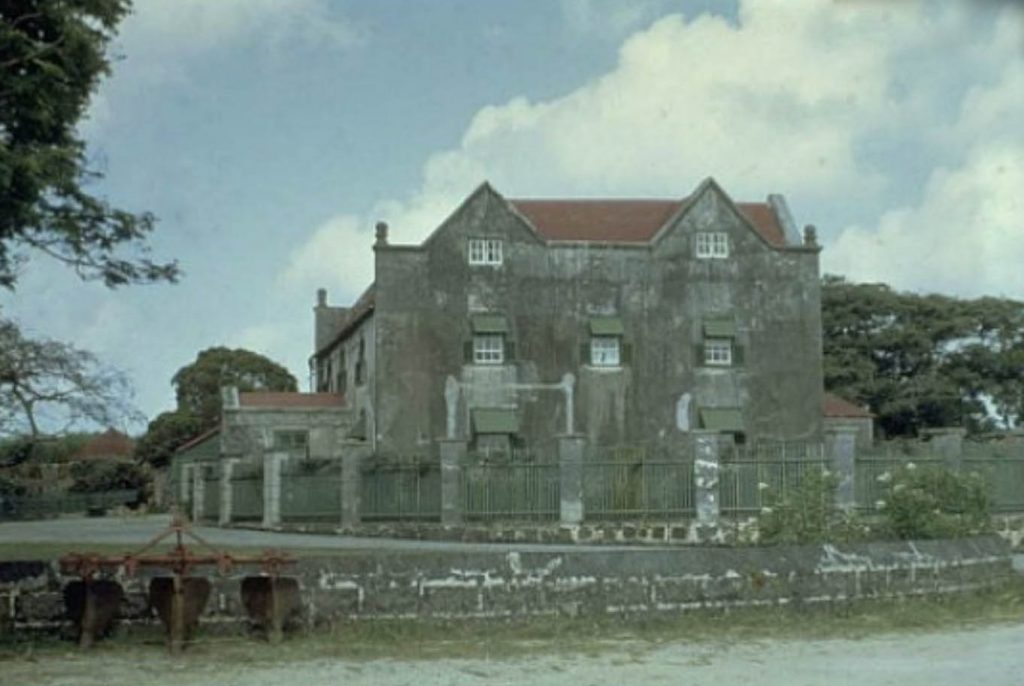An image depicting cane cutters in Jamaica after formal slavery was ended, mid-19th century. More than half of the slaves in the region were female.
In 2019, during a visit to Barbados, my stay was consumed with two searches that should never have been difficult.
The first, which led me along winding roads without signs into the breezy highlands of the island, took me the better part of an afternoon.
It led finally to the stolid ruins of a plantation estate that was founded in the early 1650s by James Drax, the man who did more than any other individual to establish a ridiculously profitable new economic model in the Caribbean.
It was Drax who refined and honed the production of sugar through the brutal organisation of enslaved men and women brought from Africa. In the process, he helped launch the British Empire — and made himself and subsequent generations of his family fantastically wealthy.
The second of my searches was more complicated and stretched out over several days.
Its aim was to find what many historians believe may be the largest burial ground of enslaved Africans in the Western Hemisphere.
What I finally found at the end of an unmarked path, just before sunset one day — ironically boxed in by tall and swaying stalks of sugar — was a field said to contain the remains of hundreds of Africans, most of whom were worked to death by design. There is no monument to commemorate them.
 Drax Hall. Photo: Supplied
Drax Hall. Photo: SuppliedIn the early 16th century, on the Atlantic island of São Tomé off the coast of Central Africa, the Portuguese first worked out the system of racial, transgenerational bondage known as chattel slavery, and married it to the quasi-industrial enterprise of producing sugar.
As I argue in my book, Born in Blackness: Africa, Africans, and the Making of the Modern World, 1471 to the Second World War, this would reign as the most lucrative and socially impactful commodity in the world until the American cotton boom that followed in its wake three centuries later (not coincidentally, white cotton farmers in the American South employed many of the same practices).
But it was in Barbados, and in particular on the Drax plantation, where the economic potential of this brutal system became most apparent.
Drax was the first big chattel slavery operator on Barbados. Sugar production processes on the island were copied from Brazil, where the commodity, the modern plantation and the new institution of chattel slavery had been transplanted from São Tomé in the 16th century.
While other planters there were still focused on white indentured servants, Drax, one of Barbados’s original English settlers, bought 22 Africans for the purpose of producing sugar in the Brazilian way in 1642.
He purchased another 34 Africans two years later, and by the 1650s there were 200 Africans labouring and dying on his lands at any given time. This was an extraordinary number for any kind of European enterprise in this era.
Drax calculated that it was cheaper to work enslaved Africans to their death and then replace them with newly imported Africans, brought to Barbados in chains, than it was to provide better working conditions and basic healthcare.
No one was spared, including pregnant women who were forced into the fields, often carrying atop their heads large vats of dung to fertilise the quickly depleted soils.
 cutting cane slavery in the Caribbean banner. Photo: Supplied
cutting cane slavery in the Caribbean banner. Photo: SuppliedA consequence of this grisly bottom-line-dominated mindset was that the average life expectancy for Africans from the moment of arrival in Barbados was as low as five years. This gradually became the template throughout the sugar-growing islands of the Caribbean.
Africans taught Drax to plant sugar cuttings sideways in long trenches rather than upright, and this promoted much more rapid growth.
He was also a pioneer in integrated operations, moving the sugar boilers with their large chimneys, like the one in ruins I found during my visit, to the farmland so that the crop could be converted into finished sugar in one continuous and finely synchronised operation.
According to the reparations commission of Caricom, the Caribbean regional body, 30 000 slaves died on the various Drax plantations in the region.
“The Drax family has done more harm and violence to the black people of Barbados than any other,” said committee chair Hilary Beckles.
The Drax plantation was lifted somewhat from its obscurity lately when it was reported that the Barbados government of Prime Minister Mia Motley is considering imposing reparation payments on the successors of the plantation’s founder, led by Richard Drax, who is a direct descendant of James Drax. This is at the recommendation of the Barbados national reparations commission. Richard Drax is a member of the British parliament, representing the ruling Conservative Party, and is worth an estimated $180 million. He recently travelled to Barbados for a private meeting with the head of the reparations commission to discuss the issue.
The contents of that discussion have not been made public. Richard Drax did not respond to a request for comment and has previously said that he does not wish to comment on the reparation claims. In 2010, he told a British newspaper: “I can’t be held responsible for something 300 or 400 years ago.”
The concept of transgenerational guilt — meaning historical guilt assumed by the descendants of people who committed atrocities in the past — is contentious. Where slavery is involved, the British public itself is sharply divided on racial lines, with white people broadly opposing reparations, and people of African descent even more broadly supporting them.
There are few stories better suited than that of the Draxes to support the arguments of those who today demand payment for the wrongs of history bound up in the transatlantic slave business, plantation agriculture and empire.
In 2020, an investigation by The Observer newspaper showed that Richard Drax had not declared the value of the family plantation I visited, which sits on 249.7 hectares of land. He inherited it in 2017 from his father, Walter Drax, when it was valued at £5.25 million.
It still produces sugar.
 Richard Drax is a descendant of James Drax. Finbarr Webster/Getty Images
Richard Drax is a descendant of James Drax. Finbarr Webster/Getty ImagesIn 1836, the Drax family received the sum of £4 293 in compensation — a small fortune at the time — from the British government for the loss it suffered when London abolished slavery throughout its empire three years earlier, forcing them to free 189 enslaved people.
This payment to the Drax family was part of a broad post-abolition indemnification that Britain paid to its wealthy slave owners, the value of which amounted to $16.5 billion in today’s money — some 40% of the British treasury’s annual output at the time.
Britain could afford this thanks to the vast wealth generated by sugar, which helped to turn an also-ran in the early imperial age into a pacesetter, and eventually into the world’s dominant power.
Sugar income changed England in many ways, from diet to democracy, through the birth of the coffee shop in Oxford and its rapid spread to London, where it spurred the creation of newspapers.
But it also financed the country’s muscle, allowing London to mount a fleet to take over Jamaica from Spain in 1655. The Draxes quickly invested in the chattel and plantation commodity businesses on that far larger island, too, swelling their fortune. The government of Jamaica is also considering demanding reparations from Richard Drax, according to media reports.
It was only through the extraction of labour from Africa on an enormous scale that Atlantic-facing Europe was able to eclipse China as the wealthiest and most powerful centre in the world; and in this, the plantations of the Caribbean territories were key.
It is also impossible to imagine Europe harnessing the continental Americas to its profit without the sacrifice of the millions of Africans whose enslavement made such a vast enterprise viable.
This is what made the West the West.
No one knows how today’s claims against the Drax family will play out. I have a favourite solution.
The hilltop estate that produced so much wealth for the family and so much suffering and horror for the Africans brought there should be turned into a museum that spotlights the long downplayed African origins of the modern age.
And the obscure burial ground down below should be hidden no more. It should be made a world heritage site for pilgrimage in the memory of the anonymous dead interred there.
This article first appeared in The Continent, the pan-African weekly newspaper produced in partnership with the Mail & Guardian. It’s designed to be read and shared on WhatsApp. Download your free copy here.